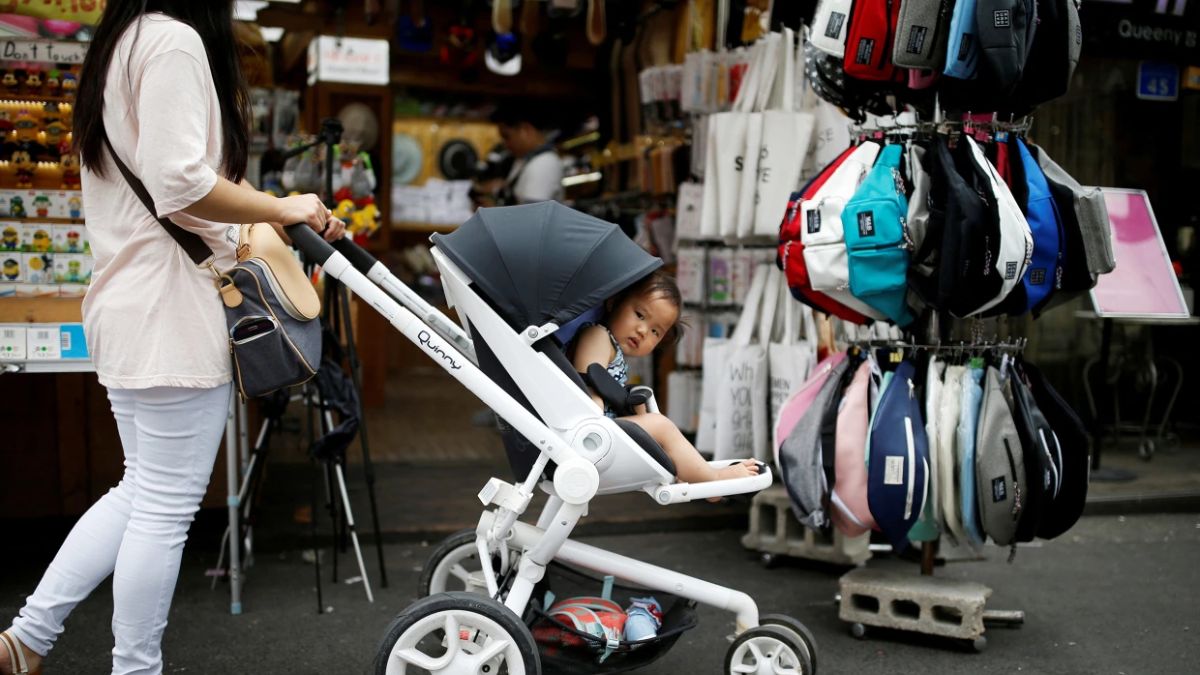South Korea is known around the world for its technological advancements, beauty products, and vibrant K-pop culture.
But at home, the country is grappling with what could be an existential crisis – the lowest birthrate in the world.
On Thursday, South Korea’s president Yoon Suk Yeol announced that he wants to establish a new ministry to address this looming demographic crisis.
“I ask the parliament’s cooperation to revise government organisation to set up the Ministry of Low Birth Rate Counter Planning,” Yoon said in a live address to the nation.
This was Soon’s first speech since his crushing defeat in the general election last year.
The government in February announced that South Korea’s birth rate fell to a record low last year.
This, despite having poured billions of dollars into efforts to encourage women to have more children and stabilise the population.
A looming demographic crisis
According to February’s preliminary data from Statistics Korea, the country’s fertility rate -– the number of children a woman is expected to have in her lifetime -– dropped to 0.72 in 2023, down nearly 8 per cent from 2022.
This is far below the 2.1 children needed to maintain the current population of 51 million.
Impact Shorts
More ShortsAt this rate, the population will decline to nearly half by 2100, according to experts from the Institute for Health Metrics and Evaluation at the University of Washington in Seattle.
The country has one of the world’s longest life expectancies and lowest birth rates, a combination that presents a massive demographic challenge.
Seoul has thus far poured hundreds of billions of dollars into trying to encourage South Koreans to have more babies, offered cash subsidies, babysitting services, and support for infertility treatment.
However, all this has made little difference as the fertility rate continues to plumb new lows.
“In order to overcome the low birth rate, which can be considered a national emergency, we will fully mobilise all of the state’s capabilities,” Seoul-based Yonhap News Agency quoted Yoon as saying.
“We will be creating a low-birth planning department in order to establish a more aggressive and powerful control tower,” Yoon added.
The South Korean government also made efforts such as increasing paid time off for new fathers, providing “baby vouchers” for new parents, and promoting campaigns for men to share household responsibilities.
Will creating a ministry really help?
Experts and locals say deeper societal problems such as bias against single parents, prejudice against non-conventional relationships, and obstacles for same-sex couples are making people think twice before having children.
Factors such as steep expenses related to raising children and housing, as well as a highly competitive job market are also responsible for pushing people away from becoming parents.
A survey by the Korea Institute for Health and Social Affairs (KIHASA) in February of around 300 childless newlyweds showed that 37 per cent of them estimated that the cost of raising a child every month will be between 1 million won (Rs. 61,044) and 1.5 million won (Rs. 91,581), according to The Korea Times.
Asked how much of a burden child-rearing expenses would place on their households, 93.7 per cent said it would be burdensome.
Of those, 58.7 per cent said it would be ‘somewhat burdensome’ and 35 per cent said it would be ‘very burdensome.’
In the largely conservative Korean society, working mothers face the challenge of balancing household duties, childcare responsibilities, and professional careers, burdening them with child’s responsibilities.
South Korea’s 0.72 birth rate is the lowest among OECD nations, while the average age a woman gives birth is 33.6, the highest in the OECD.
It looks like nothing short of a change in attitudes and in society will help South Korea solve its demographic crisis.
With input from agencies


)

)
)
)
)
)
)
)
)



